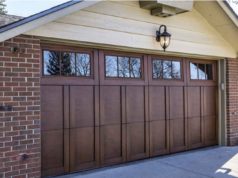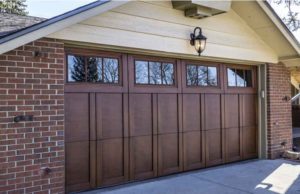Durbin, Scott, Menendez, Young, Donnelly, Duckworth Introduce Bipartisan Legislation To Protect Children In Federally-Assisted Housing From Lead Exposure
WASHINGTON – (RealEstateRama) — U.S. Senators Dick Durbin (D-IL), Tim Scott (R-SC), Bob Menendez (D-NJ) Todd Young (R-IN), Joe Donnelly (D-IN) and Tammy Duckworth (D-IL) today introduced the Lead-Safe Housing for Kids Act of 2017, which would require the Department of Housing and Urban Development (HUD) to adopt prevention measures and update its lead regulations to protect children from the risk of lead exposure. Since the enactment of federal lead policies in the 1990’s, lead poisoning rates have fallen dramatically. However, lead poisoning risk continues to fall disproportionally on minority children that live in federally subsidized housing because of outdated and ineffective federal laws and regulations.
“We know that there is no safe level of lead for children,” said Durbin, who introduced similar legislation last year after reading a Chicago Tribune article about a family in low-income housing with elevated blood lead levels in all nine children. “While HUD has made much needed improvements to their regulations in the last year, children are still being exposed to and poisoned by lead before any intervention is triggered. We have to bring these outdated lead standards up-to-date and make sure they are consistent with the latest science. We must also invest in prevention measures, which have unparalleled cost savings for society. Most importantly, lead poisoning prevention preserves a child’s ability to reach his or her full potential. American children are depending on this legislation – it can’t wait any longer.”
“South Carolina is home to some of the oldest standing public housing in the country, with buildings dating to the 1920’s,” Scott said. “We owe it to children both in South Carolina and across the country to ensure that proper inspections are taking place in regards to lead paint, which was not banned for use in housing until 1978. My mission is to ensure every child from every zip code in the country has the opportunity to succeed, and this bipartisan bill is an important piece of helping ensure low-income families have access to safe housing that can provide a stable environment for their children’s dreams to grow.”
“It’s unconscionable that in 2017 children would have to grow up in a home where simply breathing could hurt them,” said Menendez. “I was pleased to see HUD take steps last year to strengthen intervention standards, but we must do more when it comes to preventing children’s exposure to lead hazards in federally-assisted housing. We know there is no safe lead level for children, and we know that lead poisoning can be devastating for the child and costly for our communities. That’s why I’m proud that this bill strengthens the lead inspection standards to better prevent exposure to lead hazards for children living in federally-assisted housing. The cost of inaction is far too great to ignore—we should act immediately to protect our children.”
“Recent lead contamination in places across the country, such as in East Chicago, demonstrate how dangerous and costly lead poisoning can be,” Young said. “All children should have the opportunity to grow up in homes and communities that are safe from harmful toxins. I’m encouraged that HUD has made progress in improving the safety of federally assisted housing, but Congress must step up and do its part. I hope the Senate considers this legislation in short order.”
“The Lead Safe Housing for Kids Act is important bipartisan legislation that would better protect children from the threat of lead poisoning. We must keep finding commonsense ways to work together until every parent can raise their child free from the dangers of lead in their home. I hope that the Senate considers this commonsense legislation soon,” said Donnelly.
“No parent should have to worry if their home is a safe place for their children, yet in far too many houses across Illinois, children are at risk of lead poisoning,” said Duckworth. “Our bipartisan legislation will help address this public health crisis by better identifying lead hazards at home and providing affected families with a safe environment to relocate to.”
The Centers for Disease Control and Prevention (CDC) calls for a public health intervention when a child’s blood level is 5 µg/dL (micrograms of lead per deciliter). Under previous HUD regulations, however, intervention to reduce lead hazards in a home was not required until the amount of lead in a child was four times as high – 20 µg/dL. Earlier this year, HUD finalized a rule updating its definition of lead poisoning with the CDC’s definition of elevated blood lead level in children and established more comprehensive testing and evaluation procedures for housing occupied by children poisoned by lead. While HUD made much needed improvements to its regulatory scheme, the regulations continue to allow children to be exposed to and poisoned by lead before any intervention is triggered.
Lead poisoning left unaddressed can cause irreversible and long-term health, neurological, and behavioral damage in children. Children with lead poisoning require ongoing medical treatment and special education services, and studies have demonstrated the profound impact of childhood lead poisoning on outcomes such as school graduation rates. This results in $11-53 billion in additional healthcare costs, $165-233 billion in lifetime earnings, $25-35 billion in lost tax revenue, and $30-146 million in special education expenses. However, lead poisoning prevention results in unparalleled cost savings for society because every dollar spent on lead hazard control yields a return of $17 to $221 in savings. Most importantly, lead poisoning prevention preserves a child’s ability to reach his or her full potential.
Specifically, the Lead-Safe Housing for Kids Act of 2017 would ensure safe, affordable housing by reducing the threat of lead exposure and lead poisoning of children in federally assisted housing by adopting primary prevention measures to protect children in low-income housing, including:
- Prohibiting the use of visual assessments for low-income housing constructed prior to 1978 and require the use of risk assessments or a more accurate evaluation tool to identify lead hazards before a family moves into the home;
- Providing a process for families to relocate on an emergency basis, without penalty or the loss of assistance, if a lead hazard is identified in the home and the landlord fails to control the hazard within 30 days of being notified of the presence of lead; and
- Requiring landlords to disclose the presence of lead if lead hazards are found in the home.
The legislation is endorsed by Sargent Shriver National Center on Poverty Law, Green & Healthy Homes Initiative, National Housing Law Project, Lead Lab, Inc., Environmental Defense Fund, Poverty & Race Research Action Council, United Parents Against Lead, National Center for Medical-Legal Partnership, National Law Center on Homelessness & Poverty, ChangeLab Solutions, Coalition on Human Needs, EarthJustice, Conservation Law Foundation, Western Center on Law & Poverty, National Association of HUD Tenants, Natural Resources Defense Council, National Center for Healthy Housing, Erie Family Health Center, Metropolitan Tenants Organization, Lawyers Committee for Better Housing, Northwestern Pritzker School of Law Bluhm Legal Clinic, Northwestern Pritzker School of Law Environmental Advocacy Clinic, Open Communities, Housing Action Illinois, All Chicago, Chicago Area Fair Housing Alliance, Elevate Energy, Fair Housing Center of Central Indiana, Hoosier Environmental Council, Community Strategy Group East Chicago, League of United Latin American Citizens/LULAC Indiana, Northwest Indiana Federation of Interfaith Organizations, Calumet Lives Matter, Duneland, Environmental Justice Alliance, We the People for East Chicago , East Chicago/Calumet Coalition Community Advisory Group, Twin City Ministers Alliance of East Chicago and Vicinity, Politics, Art, Roots, Culture (P.A.R.C.), Veterans for Peace, Near Northwest Neighborhood, Inc., Indivisible Northwest Indiana , IVDiagnostics, Justice and Witness Ministries of the United Church of Christ, Maine Affordable Housing Coalition, Massachusetts Law Reform Institute, Mid-Minnesota Legal Aid, Empower Missouri, Saint Louis University Legal Clinic, Washington University School of Law Civil Rights & Community Justice Clinic, Metropolitan St. Louis Equal Housing & Opportunity Council, Health Law Clinic, Milton A. Kramer Law Clinic Center, Case Western Reserve University School of Law, Advocates for Basic Legal Equality, Vermont Legal Aid, Inc., and the Housing and Community Development Network




